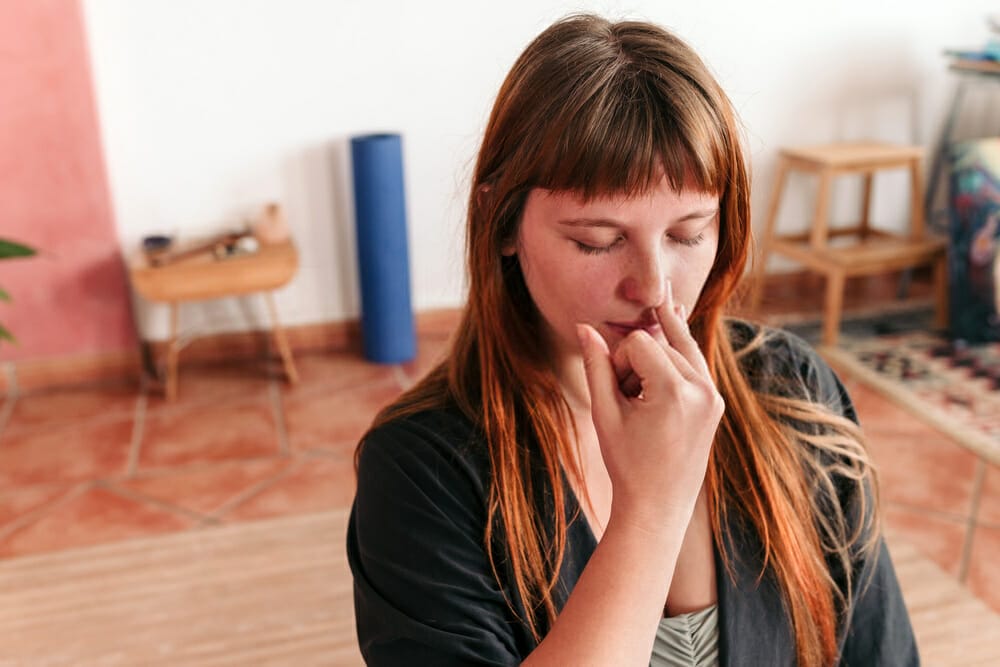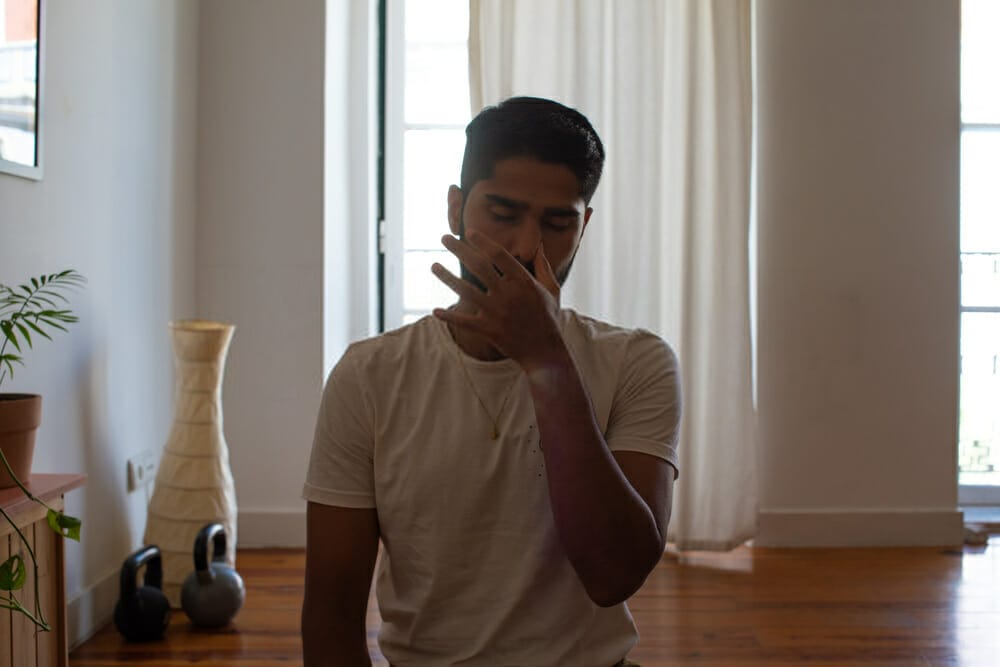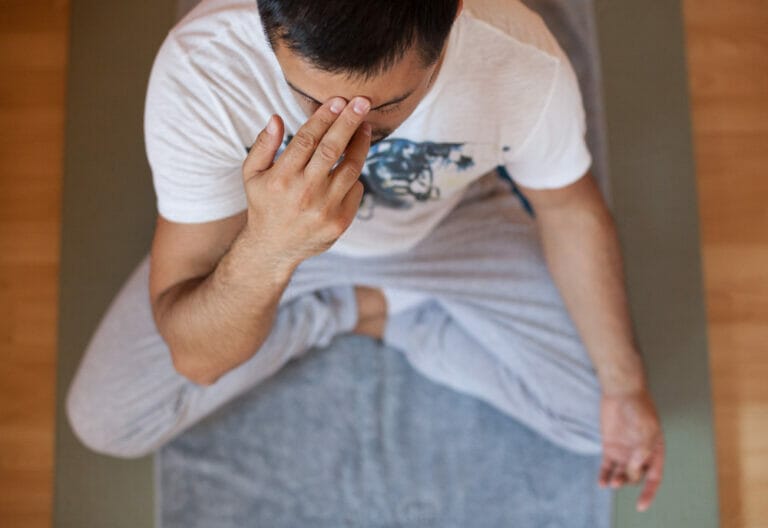Shitli Pranayama – The Art Of Breath Control
Pranayama is the art of breath control and is one of the six main pillars of Hatha Yoga.
This breathing technique will give you more energy, reduce stress and increase your self-esteem.
This article will learn about shitli pranayama, its benefits, and how to practice it.
What is Shitli Pranayama?
Sitali pranayama (sometimes spelt “Shitali pranayama”) is a particularly effective breathing practice for decreasing body temperature. It is good when the body feels the heat during the summer or in surroundings dominated by heat and high humidity.

Simultaneously, Sitali pranayama is recommended during times of high nervous tension, when you feel angry or agitated: emotions and sensations that might increase body temperature.
It is especially appropriate after an energetic yoga sequence since it restores balance to the body. Sitali pranayama is said to soothe the nervous system, aid digestion, and quell hunger pangs.
You should practise Sitali pranayama the first thing in the morning upon waking up. It will start your day with a very calming effect which will last for hours after.
It is wonderful to practice this after an evening walk or other exercise outside since it efficiently absorbs residual heat from the body.
How to practice Sitali pranayama
Sitali rajakapotasana is a standing pose that you can practice during the day. It is suitable for warming up the body, especially when it feels cold or damp or in an environment with high humidity.
You can also perform this pose when you are in a state of stress, feeling angry or agitated.
Sit in a comfortable position, possibly without leaning your back, to support yourself with the trunk muscles; it is necessary to devote this time as pleasantly as possible, making sure not to be distracted for a few minutes so that you can concentrate on your breath.
- At least in the beginning, if you are unfamiliar with conscious breathing techniques, we devote an exclusive time and space to learning;
- The eyes are closed, attention is focused on the breath, paying attention to its rhythm, the alternation of full and empty, the position in which one breath, and the depth, if there are any pauses or stiffness. The body gradually relaxes, remaining vigilant yet without stress.
- Half-close the mouth and place the tongue on the lips, bending it in the shape of a U: this will act as a sort of channel through which the air will flow during inhalation.
- Breathe in through your mouth, noticing how fresh air travels over and refreshes your tongue.
- The mouth is closed, and the tongue is resting on the palate.
- Some schools, at this moment, hold their breath or force it into their abdomen: let’s avoid this if we’re just starting. We simply leave it to the breath’s rhythm.
- Exhale through your nose. Start again.
It is helpful to practice it for a few minutes at first, no more than five. Then, if we experience dizziness, it suggests we push our breathing capacity, either through rhythm or volume.
As a result, we must pause, lie down, and regain our normal breath. Breathing reveals a lot about ourselves and straining it initially implies forcing the message it wishes to communicate.
As you gain experience, you will be able to conduct Shitali Pranayama in any position and at any moment you feel the need.
Benefits of shitli pranayama

- Sheetali Pranayama is beneficial in disorders of the tongue, mouth, and throat:
For example, in the case of thyroid disorders, which has undergone a rapid change in their levels, patients can suffer from reduced sweating and reduced ability to regulate their body temperature.
But, on the other hand, this breathing technique helps restore the equilibrium between our vital functions and metabolism. It is thus helpful in cases of high or low body temperature.
- It is effective in spleen illnesses: The technique is pleasant. The practitioner becomes aware of his breath and thus improves his sense of calmness at all times.
He also learns to distinguish between different kinds of anxiety, which mixes up with our breathing.
- It is ideally suited for people who suffer from stress in their daily life; they know how to use it as a way to relax and calm down.
- It is beneficial in cases of fever and indigestion.
- It is helpful in cases of insomnia or excessive drowsiness. In addition, it helps restore balance, which is an essential ingredient to getting restful sleep.
- It is helpful for those who work during the night, especially in occupations that require them to be on call at all times or who work irregular hours.
- Students can use it before exams, treating themselves to this breathing technique before starting the study session. If they do so regularly, they become more focused and less distracted during their sessions.
- Controls high blood pressure.
- Beneficial in Pitta-related disorders.
- It cleanses the blood. It is suitable for those suffering from chronic pain. When you are suffering from severe pain, this breathing technique will enable you to relax the body, which will also lessen the severity of the pain.
- It lowers cholesterol levels.
- It stimulates digestion and helps cure nausea or vomiting. It also alleviates colds and sore throats.
- Best for lowering body temperature.
- Best for combating the problem of insomnia.
- It relaxes the mind and works well as a stress reliever.
- We can efficiently deal with wrath and worry if our minds are calm.
- In hyperacidity, it is effective.
- It is beneficial in diseases of the lungs, treating them by improving the breathing capacity of the body.
Contraindications
Avoid taking this cooling breath if you have any of the following medical or health issues.
- People who have high blood pressure, chronic illnesses such as migraines, or persistent constipation should not do this.
- People who have asthma, a cough, a cold, or congestion should not do it because it will worsen their condition (as it includes breathing in cool air during controlled breathing exercises).
Precautions When Performing Sitali
- While performing Sitali Pranayama, you should be aware of the following precautions.
- It is best to perform this breathing exercise on an empty stomach for the best benefits.
- You should not consume any food after this breathing exercise until your body has had time to digest the food, as it may trap air in your stomach instead of being expelled through your lungs.
- Check that your back and neck are not twisted or curled, as this hinders Prana flow inside the subtle body.
- Unlike other pranayamas, you should avoid Sitali Pranayama during the winter and freezing weather because it can cause respiratory difficulties in your lungs.
- Those with cardiac conditions should seek the advice of a doctor or an experienced Yoga instructor before doing Sitali Pranayama.
Conclusion
Overall, Sitali Pranayama is an excellent yoga exercise that you can perform at any time and location to offer relief and relaxation to the body and mind.
It also aids in reducing body heat and fever and the ease of tension, anger, and worry.
It is a breathing technique that can relax the mind and soothe the body while working at the workplace.
You can even perform it while doing domestic duties at home during a 10-15 minute break. It also aids in the reduction of rage.
It is entirely free and open to everyone. It is possible to accomplish so by watching free internet tutorials and movies on it too!







